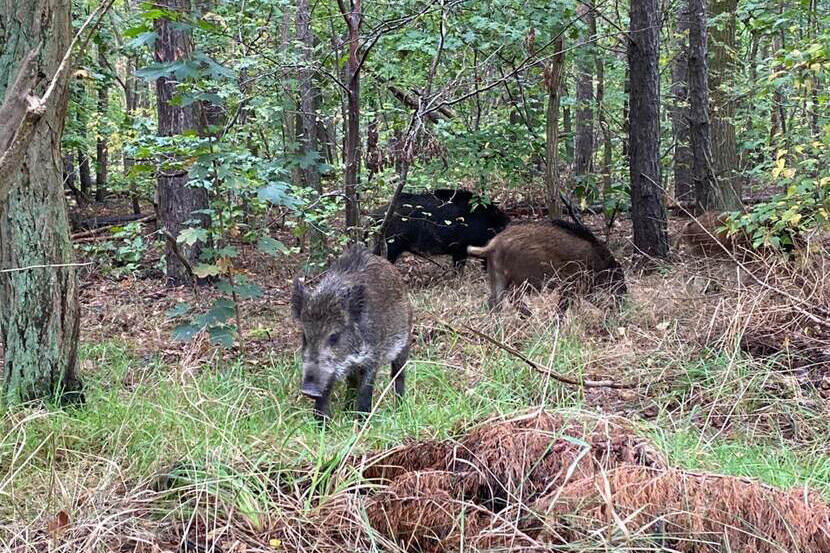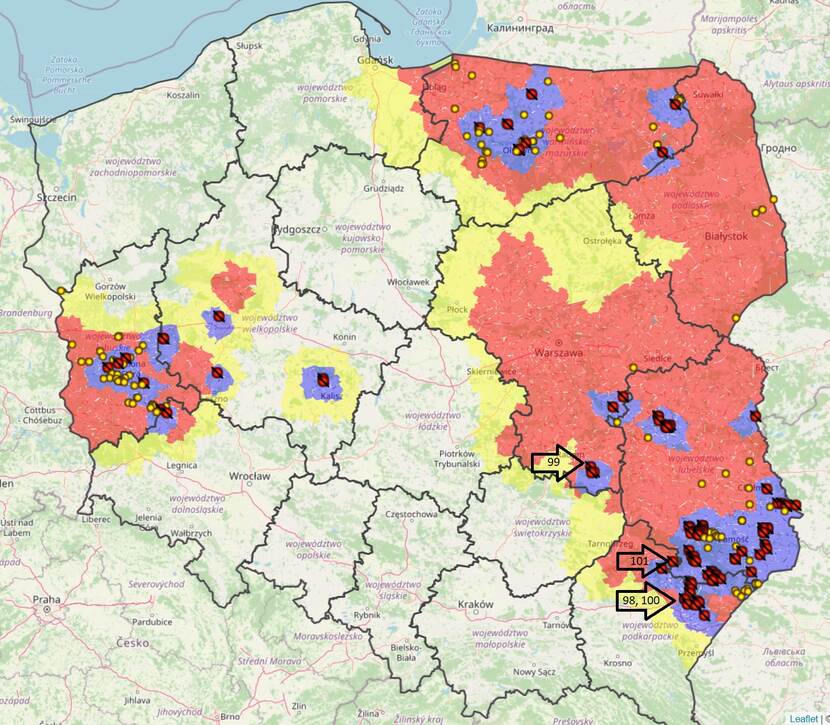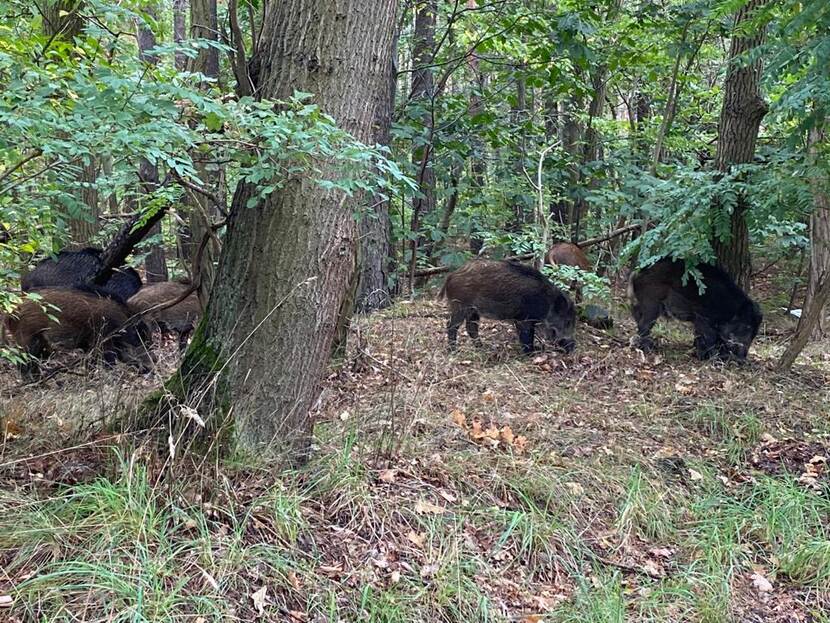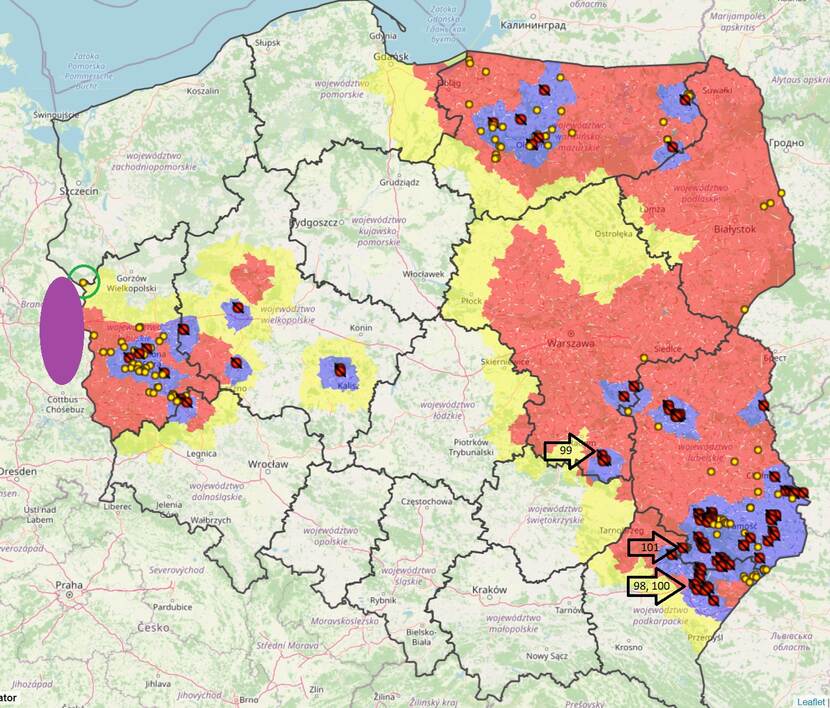Poland: update ASF situation
We hoped that in September the “ASF season” would finish, but 4 additional outbreaks of African Swine Fever (ASF) in backyard pig herds have been confirmed in Poland in October, reaching the number of 101 outbreaks this year. In general, in the eastern part of Poland, mostly small farms were infected, whereas in the west – commercial farms.
The pig industry (breeders and pork producers) are concerned about the eradication measures proposed by the government and highlight the problems faced by the farmers with some proposed solutions. Among others, they call for more support for farmers in part III areas (“blue zone”), whose functioning on the market is threatened.

As a response, CVO informed about lifting part III area restrictions on pig movements for 60 communes in the east of Poland, as agreed with Member States and the European Commission.
The situation in wild boars is still not optimistic, with high numbers detected in affected regions and infected wild boar found closer and closer to the German border, in the areas adjacent to the German infected zone.
ASF outbreaks in pigs
The Chief Veterinary Officer informed about the designation of new outbreaks of African swine fever (ASF) in pigs in the territory of the Republic of Poland. The outbreaks were confirmed in farms in 3 eastern provinces of Poland: Podkarpackie, Mazowieckie and Lubelskie.
The outbreak No. 98 was found on the farm where 27 pigs were kept, located in Wola Buchowska, Jarosław commune, Jarosław district, Podkarpackie province. The outbreak is located in a hazard area (blue zone, area defined in part III of the Annex to EC Decision 2014/709/EU).
The outbreak No. 99 was confirmed on the farm where 5 pigs were kept, located in Czerwona, Ciepielów commune, Lipski district, Mazowieckie province. The outbreak is located in a hazard area (blue zone, area defined in part III of the Annex to EC Decision 2014/709/EU).
The outbreak No. 100 was confirmed on the farm where 1 pig was kept, located in Wola Buchowska, Jarosław commune, Jarosław district, Podkarpackie province. The outbreak is located in a hazard area (blue zone, area defined in part III of the Annex to EC Decision 2014/709/EU). It is a contact farm to the outbreak No. 98, previously identified in the same town.
The outbreak No 101 was confirmed on the farm where 1 pig was kept, located in the village of Lipiny Górne-Borowina, Potok Górny commune, Biłgorajski district, Lubelskie province. The outbreak is located in a hazard area (blue zone, area defined in part III of the Annex to EC Decision 2014/709/EU).

Opinion of the pig sector
Pig breeders and producers, as well as representatives of industry organizations related to pig breeding, participated in the meeting of the Industry Agreement on Fighting ASF in September. During the meeting, the greatest threats faced by the pig sector were discussed. Among them:
- Animal rights activists, who might be given the right to enter the farm without the consent of the owner in the draft legislation “5 for Animals”, pose a very serious threat to farm biosecurity and threaten the spread of the ASF virus to other herds of pigs in Poland;
- There are no pig slaughterhouses in the blue zone in the west of the country, which is a big problem for pig breeders from the blue zone, as they cannot sell pigs;
- The difference in purchase prices between the white (free) and blue zones should be compensated by the State Treasury;
- Farmers who are located in the blue and red zones still struggle with the lack of approval from the district veterinary officers for the movement of pigs; the industry calls for clear regulation of this issue by issuing appropriate guidelines by the CVO;
- The pressure of the ASF virus in the environment continues to increase; the breeders and producers believe that the Central Crisis Team’s plan to combat ASF is ineffective and requires changes, such as including industry representatives;
- Blue zones in some regions should be removed after just 3 months - the industry requests for more effective action at the level of the European Commission on the abolition of blue zones;
- The industry also wants the causes of individual ASF outbreaks to be disclosed anonymously, as they are a valuable and necessary source of knowledge for farmers to improve their biosecurity measures;
- The industry proposes that the state should present all costs incurred for eradication of ASF, including veterinary supervision, laboratory tests, sanitary culls, compensation for the farmers, etc. These costs, in combination with additional expenditure estimated by farmers and the meat industry, can make society aware of the total financial cost of fighting the disease.
Response to the sector concerns – changes in EU regionalization
Measures to reduce the risk area established in EU regulations in relation to ASF - the so-called "blue zone", and thus the easing of restrictions, is one of the priority activities of the Chief Veterinary Officer. In October application was submitted to the European Commission for changes to regionalization by deleting particular areas from part III of the Annex to Commission Decision 2014/709 / EU ("blue zone") and transferring them to part II of this annex ("red zone"). This request was discussed and approved at the meeting of the Standing Committee on Plants, Animals, Food and Feed (DG Sante) on 20 October 2020. Accordingly, 60 communes in the province Lubelskie, Podlaskie and Warmińsko-Mazurskie (east of Poland) have been released from the "blue zone" and, thus, there will be a relaxation of restrictions imposed by EU regulations on the pork sector, in particular pig farmers.

ASF cases in wild boars
The detection of ASF infected animals continues in the restricted areas, increasing in the last weeks by app. 30 cases a week. The number of reported cases reached 3.367, with highest number in warminsko-mazurskie (1193 cases) and Lubuskie (847 cases).
Recent cases (no. 3301 – 3413) indicate finding of infected wild boars mostly in the west of Poland, closer and closer to the German border. In the east of Poland, the finding sites concentrate mainly in the areas where outbreaks in pigs were also noted.
Source: CVO, agropolska.pl
